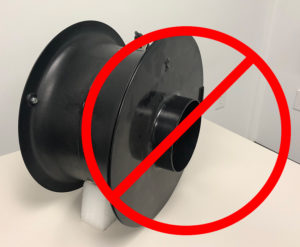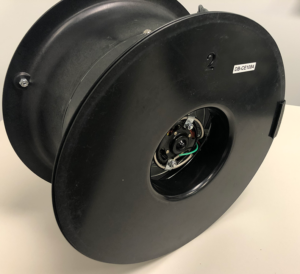Q: Why am I getting weird test results when I am depressurizing ductwork?
We have received a few calls lately from testers that have been seeing unusual readings with a Duct Blaster System while trying to perform a depressurization test on the duct work. In fact one person tested a sealed length of duct and then measured 30 cfm of leak. Obviously this raises questions on the validity of other tests taken when depressurizing duct work. One way we help users with their tests is to review how the system is set up for the test. We ask them to describe where and how each component is connected together along with the settings of the Pressure and Flow Gauge. What we have found recently is that people are not using the air straightener and are placing the flow rings in backwards. Here are a few pictures to ensure that your Duct Blaster is set-up correctly for testing.

This is the WRONG way to place the rings on a Duct Blaster System. Doesn’t matter whether it is pressurization or depressurization.

This is the RIGHT way to place the rings on a Duct Blaster System. Doesn’t matter whether it is pressurization or depressurization.
Whenever you depressurize a duct system, you MUST use the flow straightener placed inside the round transition piece before you connect the flex duct to the fan.
